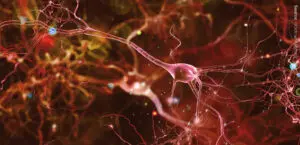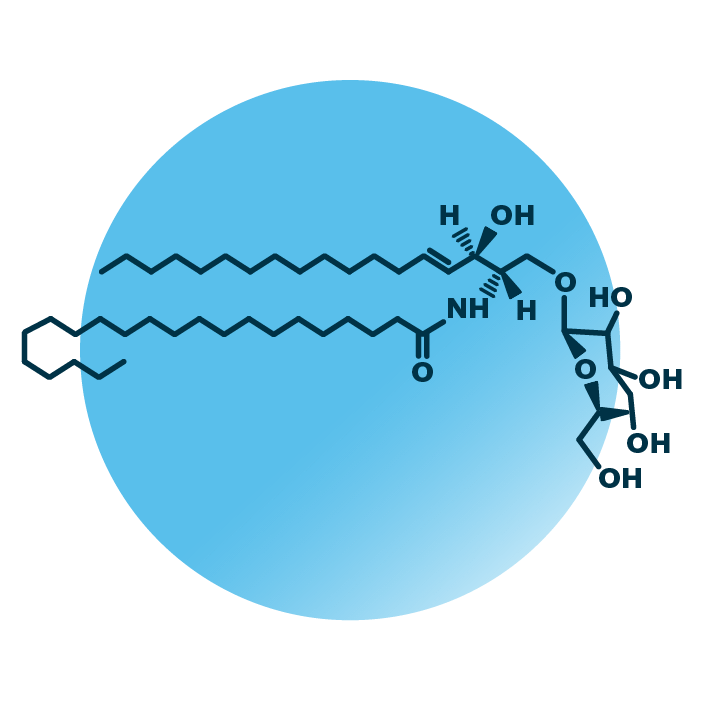About the structure and biological function of GlcCer
Structure. Glucosylceramides (GlcCer) belong to the group of cerebrosides within the sphingolipids. Their structure consists of a ceramide backbone linked to a glucose molecule. The ceramide backbone contains two hydrocarbon chains: a long-chain base which is linked to a fatty acid via an amide bond. The fatty acid and the long-chain base can be of variable length, hydroxylated, and contain double bonds.
Function. In humans, glucosylceramides are most abundant in skin to maintain the water permeability barrier by forming lamellar bodies in the stratum corneum. GlcCer also serve an important role as key intermediate in the biosynthesis of lactosylceramides and thus more complex glycosylated sphingolipids. Glucosylceramides have also been found to be required for intracellular membrane transport, cell proliferation and survival, and the immune system. Further, harmful accumulation of GlcCer occurs in Gaucher disease.



